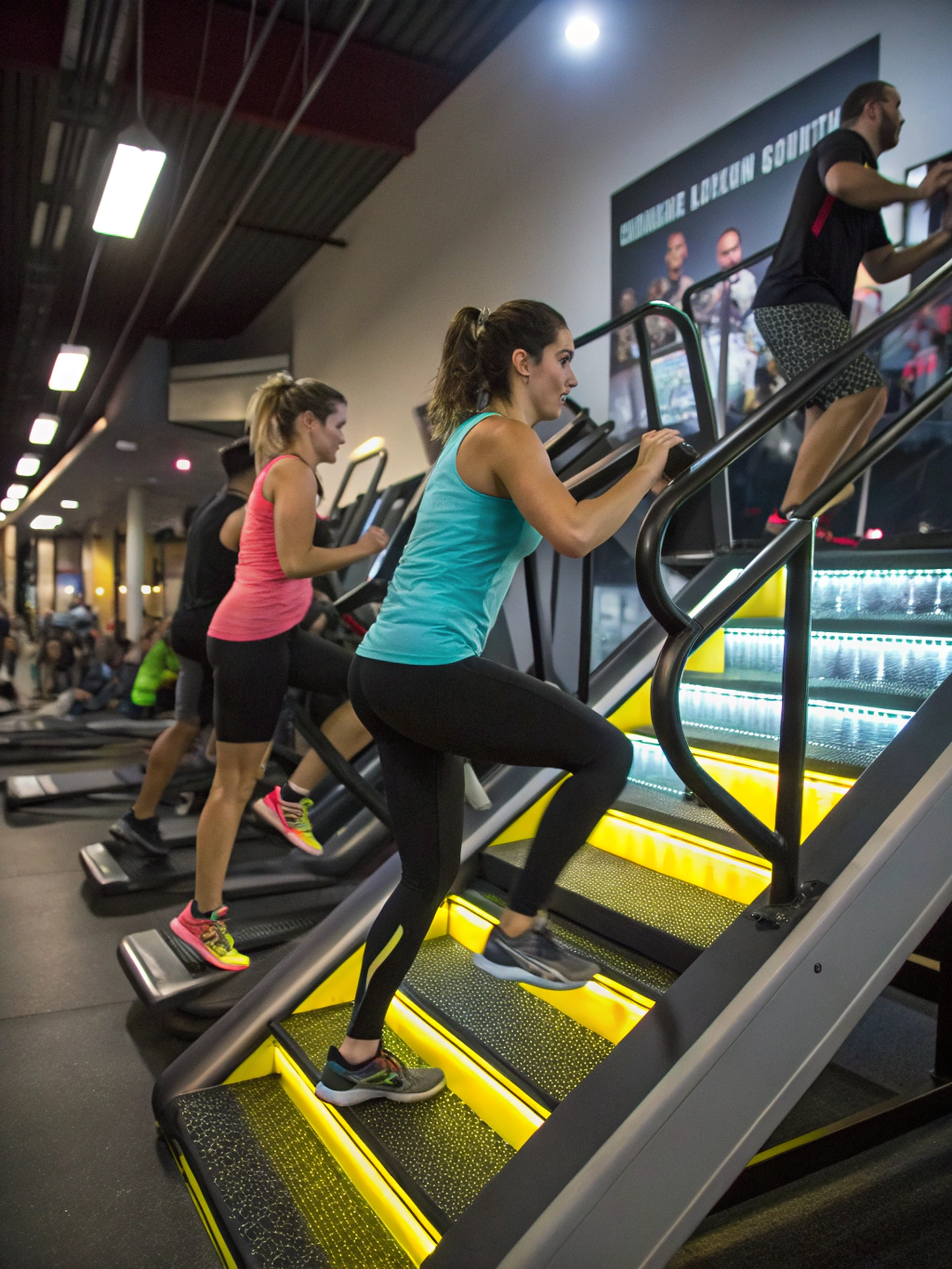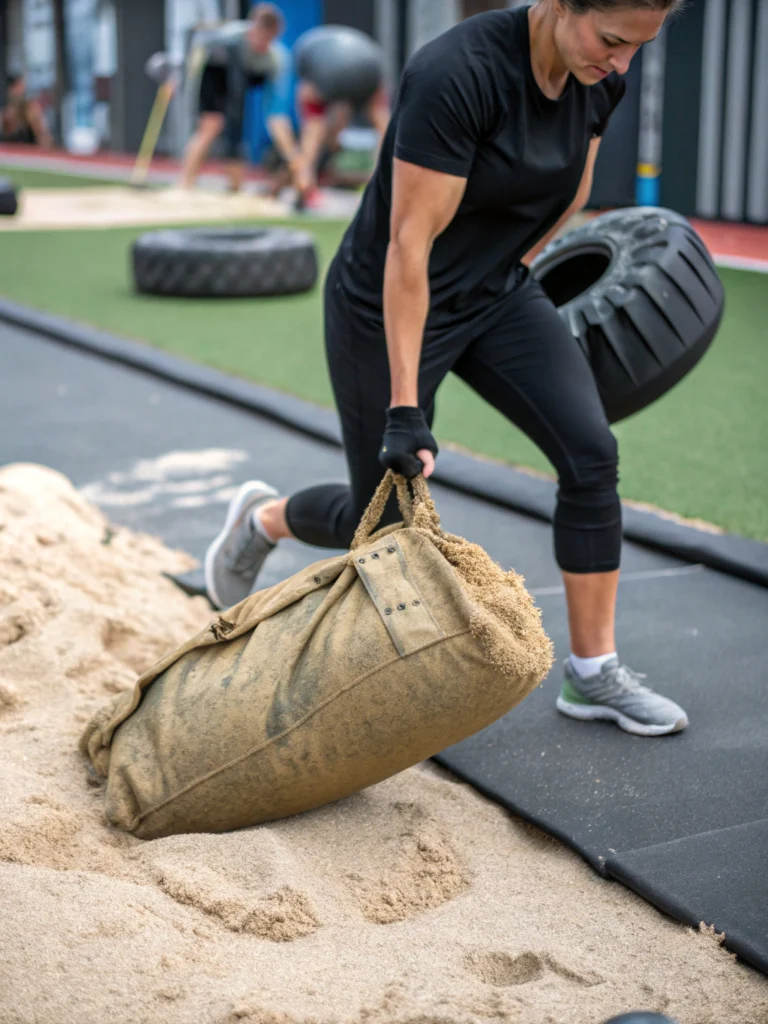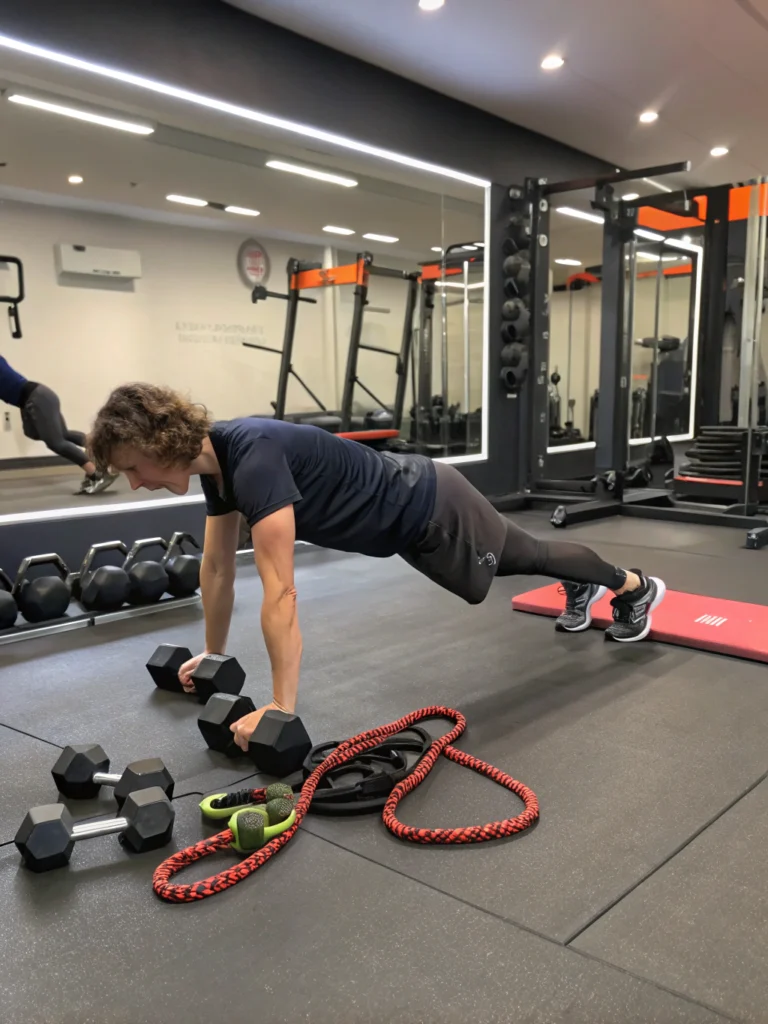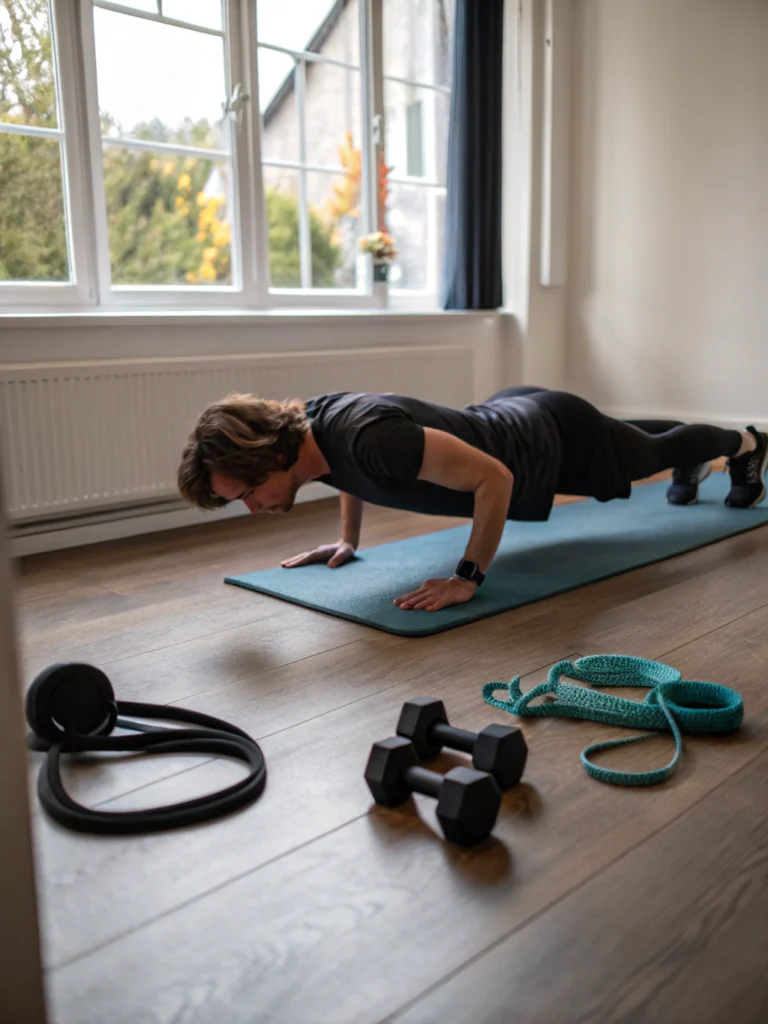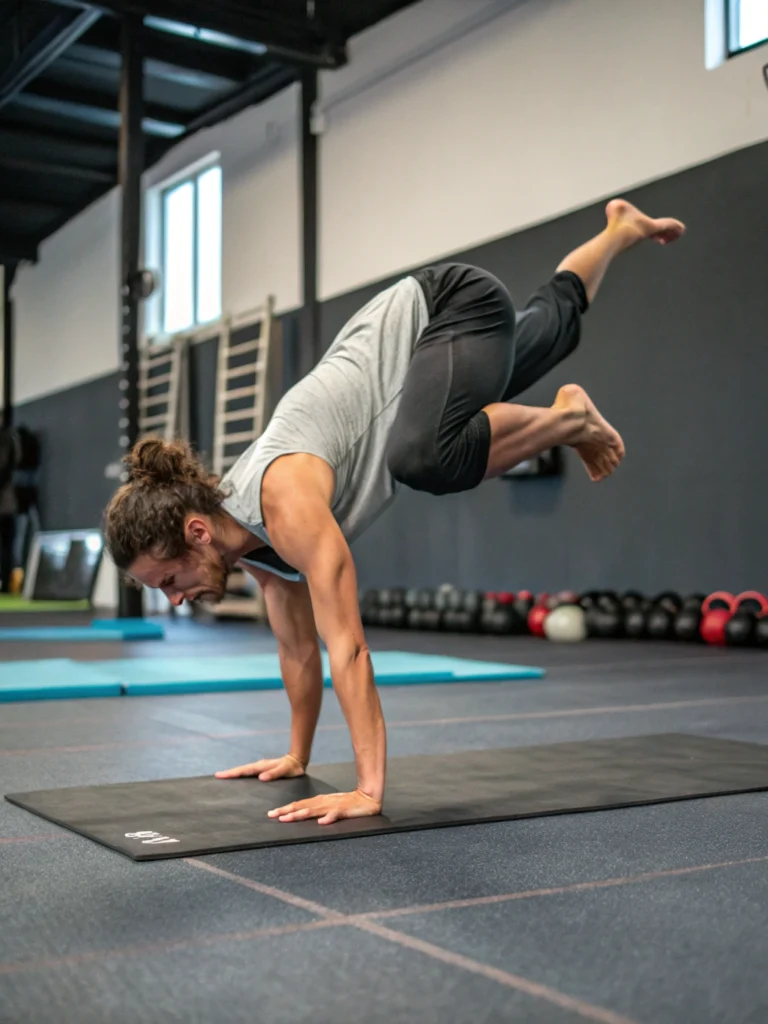Step Machine Exercise Routines: 7 Proven Workouts for Rapid Results
Are you looking to elevate your fitness journey with effective cardio workouts that deliver impressive results? Step machine exercise routines offer a powerful combination of cardiovascular conditioning and lower body strengthening that can transform your fitness regimen. According to recent fitness industry data, step machines rank among the top five most effective cardio equipment for calorie burning, with users typically burning 400-600 calories per hour during moderate to intense sessions. Whether you’re a fitness enthusiast or just beginning your wellness journey, these versatile machines provide scalable workouts suitable for all fitness levels.
In this comprehensive guide, we’ll explore seven science-backed step machine workouts designed to deliver rapid results, along with expert tips to maximize your training efficiency and avoid common mistakes that might hinder your progress.
Main Topic Overview

Step machines, also known as stair climbers or steppers, simulate the motion of climbing stairs while providing a controlled, low-impact environment for cardiovascular and strength training. These machines have evolved significantly since their introduction in the 1980s, with modern versions offering adjustable resistance levels, customizable programs, and performance tracking capabilities.
The American College of Sports Medicine highlights stair climbing as one of the most efficient exercises for improving cardiorespiratory fitness. Research published in the Journal of Sports Medicine and Physical Fitness demonstrates that regular step machine training can increase VO2 max (maximum oxygen consumption) by up to 17% within just eight weeks of consistent training, making it an excellent choice for those seeking rapid fitness improvements.
Beyond cardio benefits, step machine exercise routines effectively target key lower body muscle groups including quadriceps, hamstrings, glutes, and calves, while also engaging your core for stability. This comprehensive muscle engagement makes step machines particularly valuable for those seeking full-body conditioning in time-efficient workouts.
Key Points
When incorporating step machine workouts into your fitness routine, several critical factors will determine your success:
- Proper Form and Technique: Maintaining upright posture with engaged core muscles prevents lower back strain and maximizes workout efficiency. Studies indicate that proper form can increase calorie burn by up to 23% compared to improper technique.
- Progressive Overload Principle: Gradually increasing workout intensity—through longer durations, higher resistance, or more challenging intervals—is essential for continuous improvement. Fitness data shows plateaus typically occur after 4-6 weeks without workout progression.
- Workout Variety: Implementing various step patterns, resistance levels, and interval structures prevents adaptation and continuously challenges your cardiovascular system and muscles.
- Recovery Integration: Strategic recovery periods within workouts (active recovery) and between training sessions (passive recovery) optimize performance and results while minimizing injury risk.
- Complementary Nutrition: Supporting your step machine training with proper nutrition enhances recovery, muscle development, and overall performance. Hydration is particularly crucial, with research showing even mild dehydration can decrease stepping performance by up to 12%.
Detailed Explanation: The 7 Proven Step Machine Routines
1. The Pyramid Climb
This workout gradually increases intensity before systematically decreasing, creating an effective cardiovascular challenge while managing fatigue.
Structure:
- Warm-up: 3 minutes at low resistance
- Minute 4-6: Increase resistance by one level every minute
- Minute 7-12: Maintain peak resistance
- Minute 13-18: Decrease resistance by one level every minute
- Cool-down: 3 minutes at low resistance
Why it works: Research in the International Journal of Exercise Science shows pyramid-structured workouts optimize the balance between anaerobic and aerobic systems, promoting both endurance and power development simultaneously.
2. HIIT Step Intervals
High-Intensity Interval Training on the step machine delivers maximum calorie burn in minimal time through alternating high-intensity and recovery periods.
Structure:
- Warm-up: 5 minutes at moderate pace
- 30 seconds maximum effort, 90 seconds recovery (×8 rounds)
- Cool-down: 5 minutes gradually decreasing pace
Why it works: A 2021 study published in the Journal of Strength and Conditioning Research demonstrated that HIIT protocols on step machines increased excess post-exercise oxygen consumption (EPOC), resulting in continued calorie burning for up to 24 hours post-workout.
3. Endurance Builder
Designed to improve cardiovascular stamina through sustained moderate-intensity effort:
Structure:
- Warm-up: 5 minutes gradually increasing pace
- 30-45 minutes at 65-75% of maximum heart rate
- Cool-down: 5 minutes gradually decreasing pace
Why it works: Steady-state cardio at moderate intensity optimizes fat utilization as fuel and strengthens cardiac output over time, with data showing improved stroke volume by up to 20% after 12 weeks of consistent training.
4. The Triple Threat
This routine targets the three major lower body muscle groups through varied stepping patterns:
Structure:
- Warm-up: 5 minutes standard stepping
- 5 minutes wide stance (focuses on inner thighs)
- 5 minutes shallow steps (emphasizes quadriceps)
- 5 minutes deep steps (targets glutes and hamstrings)
- Repeat circuit 2-3 times
- Cool-down: 5 minutes standard stepping
Why it works: Electromyography (EMG) studies confirm that varying step patterns significantly changes muscle recruitment patterns, ensuring comprehensive lower body development.
5. Power Step Challenge
Incorporating brief power bursts into a moderate-intensity foundation:
Structure:
- Warm-up: 5 minutes standard stepping
- 20 minutes alternating between:
- 3 minutes moderate intensity
- 1 minute power stepping (maximum speed while maintaining control)
- Cool-down: 5 minutes decreasing intensity
Why it works: Power intervals stimulate fast-twitch muscle fibers often neglected in steady-state cardio, improving neuromuscular efficiency and power output.
6. Progressive Resistance Climb
This routine focuses on gradually increasing resistance levels:
Structure:
- Warm-up: 5 minutes low resistance
- Start at 40% of maximum resistance
- Increase resistance by 10% every 3 minutes
- Once reaching 90%, maintain for 5 minutes
- Cool-down: 5 minutes gradually decreasing resistance
Why it works: Progressive loading directly stimulates muscle adaptation while challenging cardiovascular systems to adapt to increasing workloads.
7. The 20/10 Step Challenge
Based on Tabata principles, this high-intensity approach maximizes caloric expenditure:
Structure:
- Warm-up: 5 minutes standard stepping
- 8 rounds of:
- 20 seconds maximum effort
- 10 seconds complete rest
- Active recovery: 2 minutes moderate stepping
- Repeat for 3-4 sets
- Cool-down: 5 minutes decreasing intensity
Why it works: Research from the American Council on Exercise shows this 20/10 protocol can elevate metabolic rate by up to 30% compared to steady-state cardio of equal duration.
Practical Applications
Integrate these step machine routines into your fitness program based on your specific goals:
- Weight Management: Implement the HIIT Step Intervals and 20/10 Challenge 2-3 times weekly, as these maximize calorie burn during and after exercise.
- Cardiovascular Health: The Endurance Builder and Progressive Resistance Climb routines 3-4 times weekly effectively strengthen heart function and improve blood pressure management.
- Lower Body Toning: Alternate between the Triple Threat and Pyramid Climb routines 3 times weekly to comprehensively develop leg and glute muscles.
- Busy Schedules: The 20/10 Step Challenge and HIIT Intervals deliver maximum results in minimal time, making them ideal for time-constrained individuals.
- Cross-Training: Athletes from other disciplines can use the Power Step Challenge to complement sport-specific training while developing cardiovascular efficiency.
Benefits and Advantages
Step machine training offers numerous evidence-backed advantages:
- Joint-Friendly Impact: Unlike running, step machines provide cardiovascular benefits without high-impact stress on joints, reducing injury risk by up to 30% compared to treadmills.
- Efficiency: Studies show step machines engage more muscle groups simultaneously than many other cardio machines, improving workout efficiency.
- Metabolic Enhancement: Regular stepping workouts increase resting metabolic rate by up to 7%, according to research from the University of Michigan.
- Functional Strength: The stepping motion directly translates to daily activities, improving functional fitness for real-world movements.
- Bone Density Support: The weight-bearing nature of stepping helps maintain bone mineral density, with studies showing 12% improvements in high-risk populations after six months.
Common Challenges and Solutions
Challenge: Knee Discomfort
Solution: Maintain proper form with knees tracking over toes, not extending past them. Research shows reducing step depth by 15% significantly decreases knee stress while maintaining 92% of workout effectiveness.
Challenge: Lower Back Pain
Solution: Engage core muscles throughout your workout and avoid leaning heavily on handrails. Fitness professionals recommend maintaining a natural spinal curve with shoulders back and down.
Challenge: Cardiovascular Plateaus
Solution: Implement workout periodization by alternating between the different routines outlined above. Studies demonstrate that varying workout protocols every 2-3 weeks prevents adaptation and continues progress.
Challenge: Motivation Maintenance
Solution: Track performance metrics to visualize progress, establish clear goals, and incorporate entertainment (music, podcasts, or TV) during longer sessions. Research indicates that music can increase workout duration by up to 15%.
Best Practices
- Proper Warm-Up: Always begin with 3-5 minutes of gradually increasing intensity to prepare muscles and cardiovascular system.
- Hydration Protocol: Consume 16-20 oz of water 2 hours before stepping workouts and 7-10 oz every 15-20 minutes during exercise.
- Footwear Selection: Wear supportive cross-training shoes with cushioned midsoles to absorb impact and provide stability.
- Form Maintenance: Perform periodic form checks by occasionally working out near mirrors or recording short video segments for self-assessment.
- Progress Tracking: Document workout parameters (duration, resistance, steps per minute) to objectively measure improvement over time.
Conclusion
Step machine exercise routines represent one of the most effective approaches to cardiovascular fitness and lower body strengthening. By implementing these seven proven workouts with proper technique and progressive intensity, you can achieve remarkable improvements in endurance, strength, and body composition.
The versatility of step machines makes them suitable for virtually all fitness levels, while their low-impact nature ensures sustainability for long-term fitness development. Whether you’re seeking weight management, improved athletic performance, or enhanced overall health, these evidence-based routines provide a structured path to your fitness goals.
Ready to take your fitness to new heights? Select one of these proven routines and commit to consistent implementation for at least four weeks to experience the transformative benefits of strategic step machine training.
FAQs
How often should I perform step machine workouts for optimal results?
For beginners, start with 2-3 sessions weekly, allowing 48 hours between workouts for recovery. Intermediate and advanced individuals can increase to 4-5 sessions weekly, alternating between high and moderate-intensity routines.
Are step machines effective for weight loss?
Yes, research demonstrates that step machines rank among the top calorie-burning exercise equipment, with the potential to burn 400-600+ calories per hour depending on intensity and body weight. When combined with proper nutrition, step machine training creates an effective caloric deficit for weight management.
Will step machine workouts make my legs bulky?
No, standard step machine training primarily develops muscular endurance rather than significant hypertrophy. The resistance levels typically aren’t high enough to create substantial muscle growth without additional resistance training.
How long should my step machine workouts be?
Effective sessions range from 20-45 minutes depending on intensity. HIIT-style workouts can deliver results in as little as 20 minutes, while moderate-intensity sessions might extend to 45 minutes for optimal benefits.
Can beginners use step machines safely?
Absolutely. Beginners should start with shorter sessions (15-20 minutes) at lower resistance levels, focusing on proper form and gradually increasing duration and intensity as fitness improves. Using the handrails for balance initially is appropriate while developing stability.

